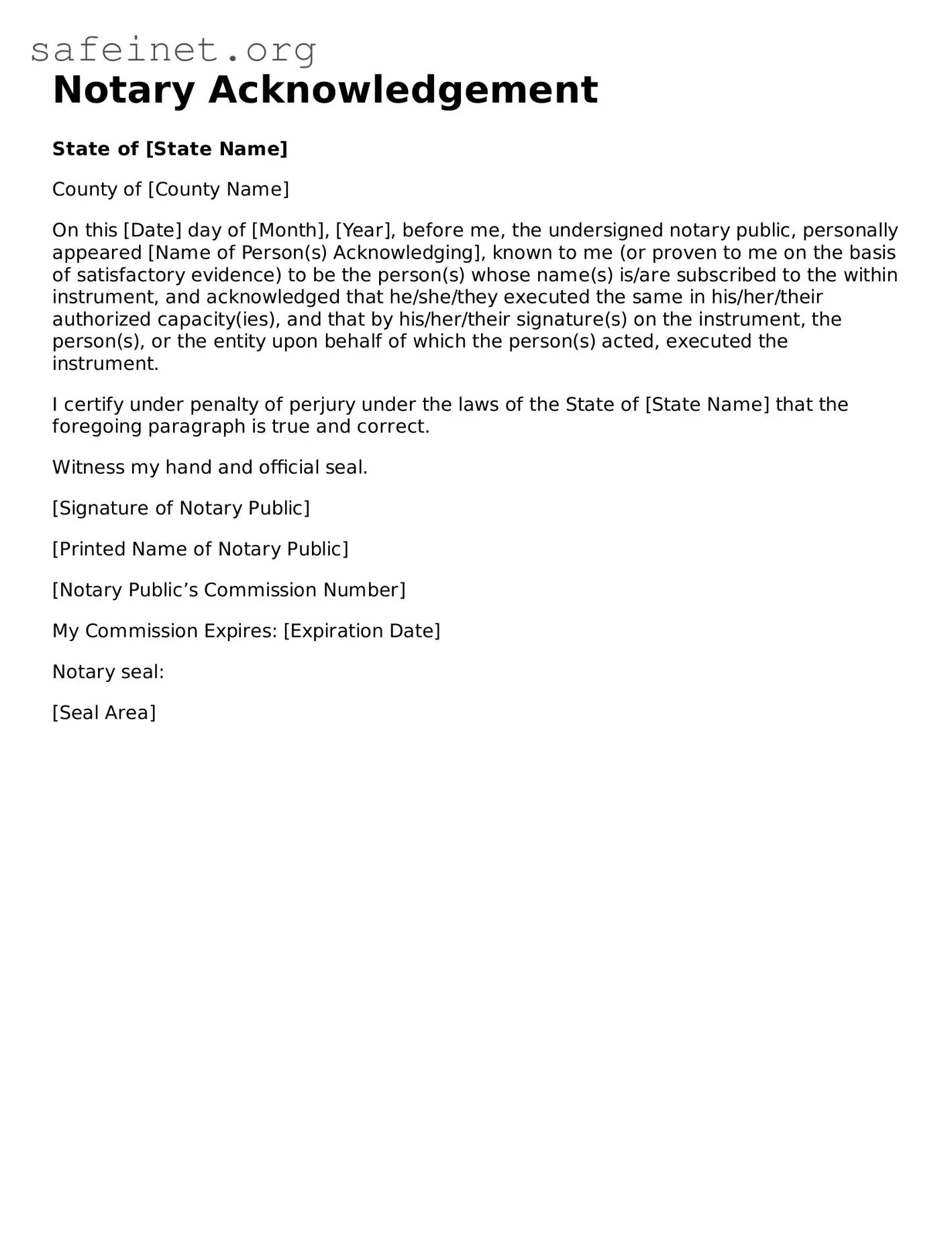Notary Acknowledgement
State of [State Name]
County of [County Name]
On this [Date] day of [Month], [Year], before me, the undersigned notary public, personally appeared [Name of Person(s) Acknowledging], known to me (or proven to me on the basis of satisfactory evidence) to be the person(s) whose name(s) is/are subscribed to the within instrument, and acknowledged that he/she/they executed the same in his/her/their authorized capacity(ies), and that by his/her/their signature(s) on the instrument, the person(s), or the entity upon behalf of which the person(s) acted, executed the instrument.
I certify under penalty of perjury under the laws of the State of [State Name] that the foregoing paragraph is true and correct.
Witness my hand and official seal.
[Signature of Notary Public]
[Printed Name of Notary Public]
[Notary Public’s Commission Number]
My Commission Expires: [Expiration Date]
Notary seal:
[Seal Area]
